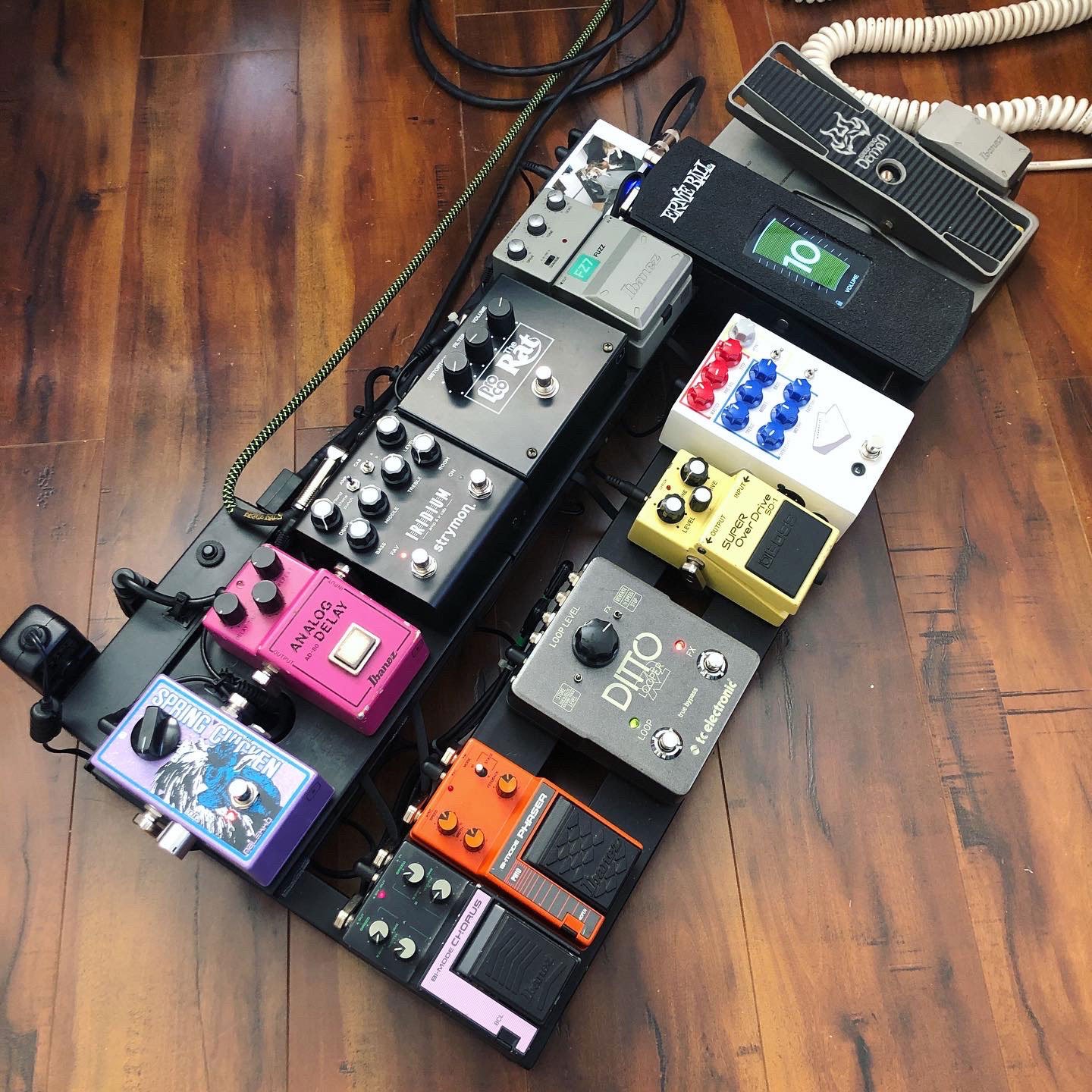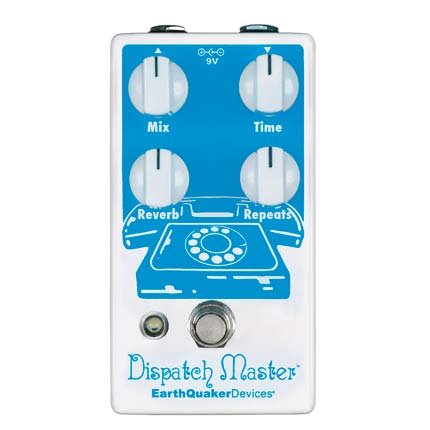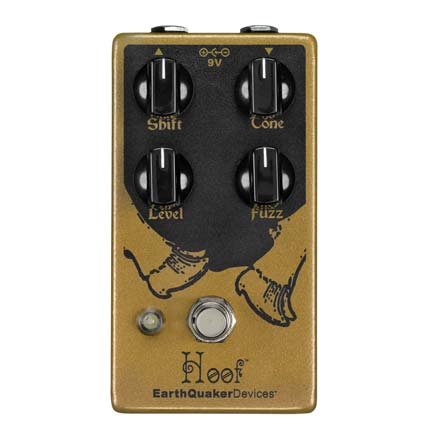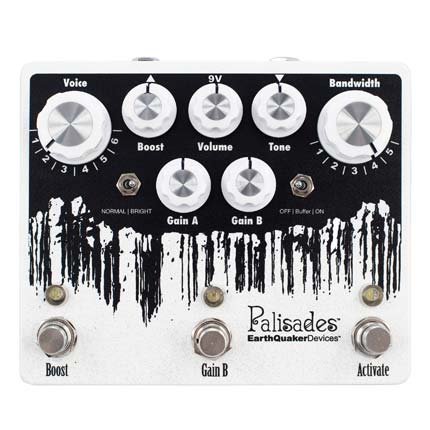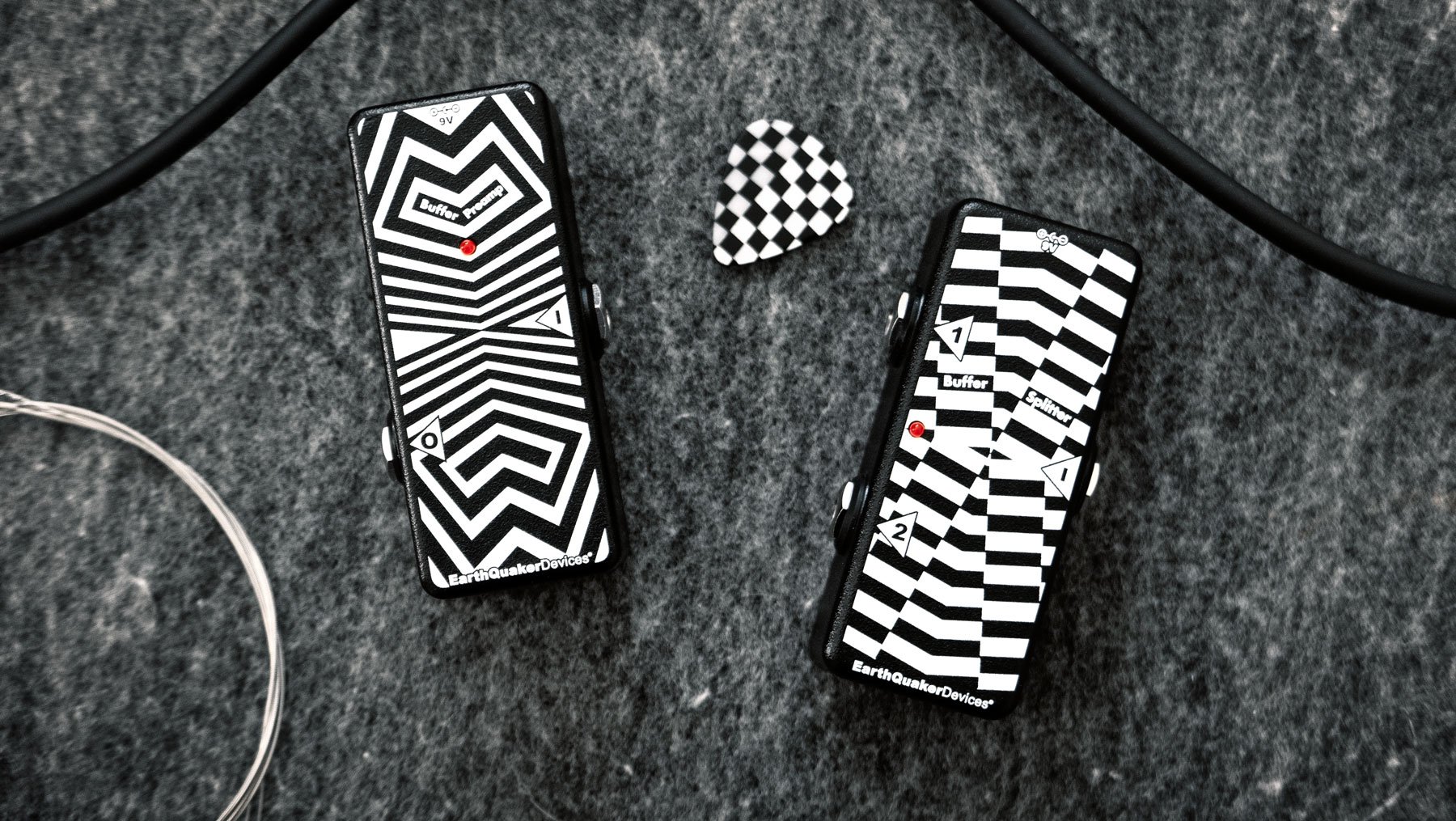A Beginners Guide To Pedalboards Pt. 1 : Choosing Your Pedals
Patrick Benson
My first pedals were a DOD Grunge overdrive and a Dunlop Cry Baby. I was drawn to the aesthetic of those early DOD pedals because they told me exactly what I was getting myself into. The sound wasn’t great, and my Hendrix-inspired wah-wah did not mix well with the attitude of Kurt Cobain trapped inside of a purple and black box with the settings of “loud, butt, face” and “grunge” maxed out. Now that I am reflecting on that time, I like to see myself as a young avant-garde noise artist playing one-person shows in my parents’ basement, but truth be told, I was really just butchering Black Sabbath and Green Day songs and forgetting to turn off the damn wah pedal. I quickly ditched those pedals as they did not convince my parents that my guitar lessons were worth the investment, so they stayed stashed away in my closet until deemed worthy again years later.
Growing up, pedals (especially pedalboards) were a bit of an enigma. I have no memory of my parents ever getting me my first pedals, as they very well could have been lent to me by a friend. It was only when I grew a bit older and was allowed to go to the magazine section alone while my parents shopped for groceries that I first stumbled upon what some of my guitar heroes were actually playing. The typical gear setups I would see illustrated in the back of Guitar World magazines were racks of digital effects processors, preamps, power amps, and full stacks. The first pedalboard I remember coming across was in an interview with J Mascis of Dinosaur Jr, and it was at that moment I gathered some sense of clarity. Pedals tell you precisely what they are, either in their name or simply by design. Rack-mount effects processors were more challenging to conceptualize for me early on. Until that watershed moment, I was under the impression that they were the only way to experiment with guitar effects.
From that moment forward, I went down the rabbit hole of guitar pedals, from trading with buddies, buying and selling, to eventually building pedalboards for myself and my clients. Now the tides have turned, and pedals are more popular than ever, but that doesn’t come without a cost. There are probably twenty pedals (at least) for every single type and far too many influencers and paid ads giving off the wholesome impression that you need what they’re selling you. Yet, some people can make sound and express their art with an old gas can, some fishing line, and a few pieces of wood, not because someone sold them the idea, but because they strived for that feeling of expression by any means necessary. That is what makes art human.
The next time you find yourself hiking, surrounded by beautiful scenery, and all you’re thinking about is that next pedal on your watch-list, I want you to stop and rethink where you are. Most of the time, we want something we think we need to become a better player or sound better when we just need reliable tools for the job. Should you spend all of your savings on a Klon Centaur because everyone on Instagram subconsciously suggests you do so? Do you buy a Blooper or a Microcosm only to realize you have no loops or bloops left in you after reading the manual?
Everyone learns in their own way. Some don’t want to be told how to go about certain things and leave lessons learned in exploration and experimentation (myself included). Others may want to skip the long hours filled with headaches due to an overabundance of coffee and trust in what they already know and are comfortable using. With this guideline, I hope to convey a sense of where one might begin when piecing together their sonic arsenal in the form of the ever so popular and no longer elusive pedalboard.
Below is a list of some of what I believe to be essential pedals for any player. I have owned most of these and have used all of them. Are there better options out there? I am sure of it. Do you have strong opinions that some of these pedals are horrible? I am almost certain that you do. This post is more about letting go of what we think is cool and eliminating some doubt or confusion to allow in some room for more freedom and creativity without the pressures of conformity.
TUNERS
Yes, you need one and if you think you can get away without it because you enjoy clipping your Snark onto the headstock of your vintage Jazzmaster, then stop reading this now while you’re ahead.
Korg PitchBlack Custom: Bright and easy display with options for strobe, half strobe, meter, and regular. Accurate tuning as well as an adjustable calibration.
Boss TU-3: You will likely never need to buy another tuner if you go this route. They’re rugged, accurate, and will last you a lifetime. (Just make sure you don’t accidentally set it to 1/2 step down when your band plays in standard tuning; they will never let you forget about it).
Ernie Ball VPJR/Tuner: If you’re worried about saving real estate on your board for that fifth overdrive, then this is for you. The tuner is not the most accurate, but you now have that fifth “transparent” overdrive in your chain, so what have you got to lose? (Transparent has zero meaning when used throughout this article.)
FILTERS
A Filter is when your signal is enhanced by adding or removing specific frequencies. It doesn’t work like a typical EQ, as an envelope filter is dramatically different. Instead, most Filters use an LFO (low-frequency oscillator) which adds movement to your sound, enhancing notes to produce vowel-like sounds, similar to human vocals.
Typically filters run before drives as you’d normally want to filter the guitar's direct signal, unaffected by the other pedals in your chain, but that is my preference, and there is no harm in throwing a wah at the end of everything. It probably sounds cool, depending on what you’re doing.
Electro-Harmonix Q-Tron: A classic.
Boss AW-2 Auto Wah: More of an envelope filter, simple and easy to dial in.
DOD Envelope Filter: Another classic envelope. The bass version is best for bassists.
Ibanez Weeping Demon: My favorite wah pedal. You can pull a lever to park the wah on the exact frequency you want and even bypass it with a separate switch.
PREAMPS, OVERDRIVES, & BOOSTS
Who’s on first? Who’s on second? Does my boost come before my fuzz? Do I need a buffer? I say this with all transparency as I don’t know what you will like, but I can suggest that you try them all and in every way possible. The right decisions will be yours and yours alone to make. For now, here are some great options and a couple of personal favorites.
Boss SD-1: A classic, it has a buffer and will change the sound of your guitar’s natural tone, but chances are if you choose this pedal, you don’t care about that sort of thing anyways, and you just want that extra crispy overdrive for those fingerstyle licks.
JHS Colour Box: A Neve in a box and plenty versatile for guitar, bass, synth, and even vocals. The EQ is the real selling point, and Version 2.0 has even more precision with its EQ shift knobs. This pedal is a good option if you want that “direct-in” guitar sound used and loved by many. [Tech Tip: if you’re typically bothered by hiss, I would suggest getting a line isolator box or a different preamp pedal altogether as this thing’s known to be hissy, similar to the real thing.]
EarthQuaker Devices Palisades / Dunes: Truth be told, I was never much of a Tube Screamer fan until EarthQuaker Devices released this pedal. The Palisades covers every TS option known on planet Earth, and if that’s too much for you, they made a stripped-down version (Dunes) that kicked butt and is sadly now retired. You can find them used obviously, but why did they stop making this? Hello? Are the powers at be reading this? I saw that Reverb.com made a movie called DUNE about this pedal. Has anyone seen it yet?
Bowman Audio Endeavors The Bowman: If you’re looking for that Centaur sound and live in reality, this is your best bet. I will also add that this is hand-built by a great guitar player and an even better human, so you get the best of both worlds with this Klone. These sound best used as an overdrive but do a clean boost very well. So if you can only have one from this list, I vote Bowman.
MXR Micro Amp: Another tried and true classic. If you want a clean boost at the beginning of your chain or a swift kick in the rear after eating dessert before dinner, then this is your golden ticket, Charlie Brown.
DISTORTIONS & FUZZ
The Rat: This is one of my favorite pedals of all time. The Filter knob (sometimes referred to as the Tone knob has a great sweep, allowing you to precisely dial in your distortion to cut through or sit back in any mix. If you’re brave and really crank this pedal, it sounds truly wild and loud. [Rumor has it that when the engineers at Line 6 first heard a Rat, they said to themselves, “This sounds INSANE” but could not face the reality that a filthy rodent could make such a sound. So, they cloned and mutated one of their own, and thus the Spider was born.]
Ibanez FZ7: An inexpensive solution for 60’s inspired fuzz tones. The speaker cranker setting adds a tight gate to the signal, which is a lot of fun for fast-picking attacks when soloing. The best part is that once you dial in your settings, you can press the knobs down, and they will never move. How come this didn’t catch on more? [Tech tip: the footswitch isn’t great, and you may have to replace it at some point in the pedal’s lifetime].
EarthQuaker Devices Hoof: A replicant of the green Big Muff made famous by Electro-Harmonix in Russia. What more do I have left to say about the big Green Muff, other than everyone should have one, and this is an excellent alternative to the real thing.
Voodoo Lab Superfuzz: If your budget is tight and a Univox SuperFuzz is out of the question, as it is for most of us, this is a great and inexpensive alternative. No, they don’t just make boring old power supplies at the Voodoo laboratory; they have some great pedals for not a lot of money, so check them out!
MODULATION EFFECTS
Phase was one of the earliest guitar effects, and the intention was to imitate that of a Leslie (rotating speaker), a sound many strived for, and in time the Phaser pedal was born. The guitar's signal is split into two separate paths; one is filtered and then combined with the other signal, allowing one to cancel the other out when the frequencies are out of phase. This signal modulation gives the impression that the sound moves away from you and comes back.
Boss PH-1: The OG Phaser. This one set the bar, and some have never looked back.
Ibanez Phase Tone: Another early phase but with added width control.
Electro-Harmonix Small Stone: It’s another classic, simple pedal design with a switch to control the rate. You can’t go wrong with a pedal with only one knob. You just can’t.
A Flanger is when two identical signals are mixed together, with one playing at a slightly slower speed. Because one playback speed is slower, the two signals will continue to increase, creating a swooshing effect similar to the sound of a jet engine.
Electro-Harmonix Electric Mistress: A classic pedal with flange and chorus effect options.
Korg CHR-1: Mode 2 is a nice flanger.
Ibanez FL9: More controls, same jet engine sounds.
A Chorus effect will alter the sound of the original signal from your instrument by adding a secondary sound with subtle variation in pitch and a slight delay. This effect creates a similar sound to a 12-string guitar that naturally gives off that chiming tone due to their paired strings with subtle differences in tuning and attack time. Through a stereo amp, such as the Roland JC-120, for example, the chorus effect adds a lot more space and depth to your sound. If you ever get a chance to play one of these amps, I suggest adjusting your volume to a reasonable level and proceeding to sit down with your head in front of the two speakers (directly in the middle). And, while on the clean setting, play your instrument, turn on the chorus, and you will hear exactly what I mean by spacious and lush sounds.
Boss CE-1: I really like Boss pedals. They seldom break, and they’re both ugly and elegant in all the right ways.
Electro-Harmonix Small Clone: Another one-knob solution from the sonic sorcerers and most notably made famous by your local used selection at Guitar Center and that 90’s cover band down the hall from your practice space.
MXR Analog Chorus: I almost forgot about this pedal and then stumbled upon it while writing this article. They’re cheap and good, offer many options to craft that perfect chorus sound, and even have a thru for running stereo chorus to another amp.
Boss DC-2W: This pedal made the list because it has ZERO knobs! You can’t tweak anything. All you get are four switches and a recipe for the cure to that boring clean tone you had before owning this pedal.
Tremolo is an effect that rhythmically changes the volume of your signal. An LFO (low-frequency oscillator) turns the signal up and down. The traditional tremolo effect is typically made with sine or triangle waveforms. Sine waveforms are lush sounding, while Triangle waves are linear, creating peaks and valleys that easily cut through a mix. Typically a tremolo will allow you to adjust the “rate” (speed), and “depth” sets the limit of volume loss from minimal to completely killing the sound.
Boss TR-2: A classic, simple, it’s what you want when you think tremolo.
Strymon FLINT: Fender-style amp tremolo and reverb in a box!
Voodoo Lab Tremolo: More controls, easy to use, and it sounds great.
EarthQuaker Devices Hummingbird: Harsh, triangle waveform tremolo, a unique sound.
Vibrato is when the signal from your instrument shifts in pitch from the note you are playing. You can do this with your guitar’s vibrato system (often referred to as tremolo, but it’s not). You can also adjust the frequency of the pitch, speed and even change how far the pitch will shift.
Boss VB2-W: They finally reissued the much sought after and overpriced VB2. This new version faithfully reproduces the original analog circuit and a new mode with a unique filter wave and real-time expression controls for the vibrato depth.
MXR Univibe: Chorus and vibrato in one pedal.
ECHO, DELAY, & REVERB
We have been fascinated with audio Delays long before the infamous Memory Man and his voyages to the space station. But if I had to guess, I think we first became fascinated with these sounds by shouting into expansive natural formations such as cave dwellings or vast canyons. However, It wasn’t until the 20th century and the evolution of audio recording technology that musicians were first able to interact directly with a version of their own playing. With tape being the principal recording method of the time, tape delay units like the Roland Space Echo and Maestro Echoplex became notable in the 1970s. Technology continued to advance, and by the middle of that same decade, bucket brigade chips became the answer for tape-like analog delay in a compact format (in walks the Memory Man). Soon after that, the ’80s arrived, and digital effects processors took over. Though great in their own right, they never quite got the authentic sound of tape and analog delay.
Line 6 Echo Park: Move to Los Angeles, buy a Stetson, and get yourself one of these multi-purpose, reusable echo machines.
Ibanez Echo Shifter: It’s echo and modulation in a slick design with a fader for delay time that looks classy as all heck.
Danelectro Reel Echo: A pretty good interpretation of an Echoplex for not a lot of money, and it’s seafoam green.
Ibanez AD9 Analog Delay: Bucket brigade analog goodness in hot pink!
Boss DD3: Probably everyone’s first and, for some, their last delay pedal ever.
Reverberation effects and echo are similar; they both happen after a sound has been made, but beyond that, they are very different. The echoing sound is distinct from its source, sounding clear due to the magnitude and distance it travels from the source sound. Reverberation happens when sound continues due to repeated reflections after the sound source has stopped. These sounds are more difficult to hear as the reflections keep repeating, creating a muddy sound due to sound waves reflecting off of multiple surfaces. Spring reverb is a relatively simple and inexpensive method for creating this effect. In the 1960s, the Hammond Organ Company was the first to develop a compact reverb unit for their organs. It was so successful that they released it as a separate hardware unit, known as the Accusonics Type 4 Spring Reverb. Who was one of the first customers of this soon-to-be prized guitar effect? Leo Fender installed these tanks in the 1963 Vibroverb guitar amplifier, bringing more depth and sonic space to guitar music, with Dick Dale being one of the first users to pioneer this new technology in a guitar amplifier. Much like delay in the 1980s, digital reverbs became a desired effect in their own right, emulating the sounds of spring, hall, plate, and gated reverbs.
Boss RV5: This does everything but digitally, spring, hall, plate, modulated, gate, and room reverberations.
Malekko Spring Chicken: This is the closest pedal to an analog spring reverb tank that I have come across so far. I do love a one-knob pedal.
EarthQuaker Devices Dispatch Master: This one combines the best of both worlds; digital delay and reverb in one box that you can’t beat for the real estate, price point, and ease of use.
UTILITY
Loopers: it’s simple, you stomp record, you riff, then you hit stop, but you still hear yourself even though you’ve stopped playing. The fundamentals of audio recording are right at the tips of your big toes, giving you all the power for creativity, jamming, and nonsensical guitar solos to impress nobody but yourself.
T.C. Electronics Ditto X2: An easy and fun to use looper with ½ speed mode for tape loop-like drone sounds.
Line 6 DL4: I mean, this one may be in my top five of all time. It’s got a 7-second looper, analog, and digital delays all in one big ugly and beautiful green enclosure.
Other:
Electro-Harmonix Freeze: It’s great for sustaining notes or drones and is very useful for solo acts or bands that don’t like talking in between songs.
Effects Loop: Are you curious about effects loop but don’t have an amp with an effects loop? Try one of these pedals. They’re very handy for many reasons, but I like to run certain pedals into one of these to keep them out of my signal chain when I don’t deem them necessary.
Xotic Effects X-Blender: This one has a big wet/dry knob and even a boost/EQ section to really make your presence known.
WHAT’S NEXT? SIGNAL CHAIN, POWER SUPPLIES, CABLES, AND MORE…
I will save the details for part two, but something to keep in mind when plugging all of this stuff in is to have fun and experiment. Don’t dive in too deep. Start with one pedal and then plug in one or two more and see how they work (or don’t work) together, change the routing and jot down some of the sonic differences if that helps. A good guideline for signal flow would be to follow the order of everything listed above and make changes from there. So, I’ll leave you to it,, and feel free to share your signal chain in the comments section.
Patrick Benson is a musician, and guitar repair tech based in Los Angeles, California. He works at a repair shop as well as out on the road for Nine Inch Nails and Beck. He plays guitar in the band Charade, has a solo instrumental project and hosts a monthly podcast. You can follow him on Instagram and Twitter.

